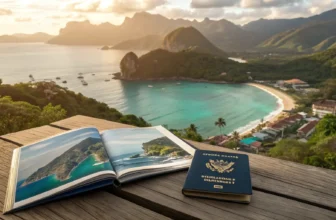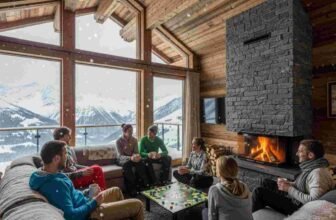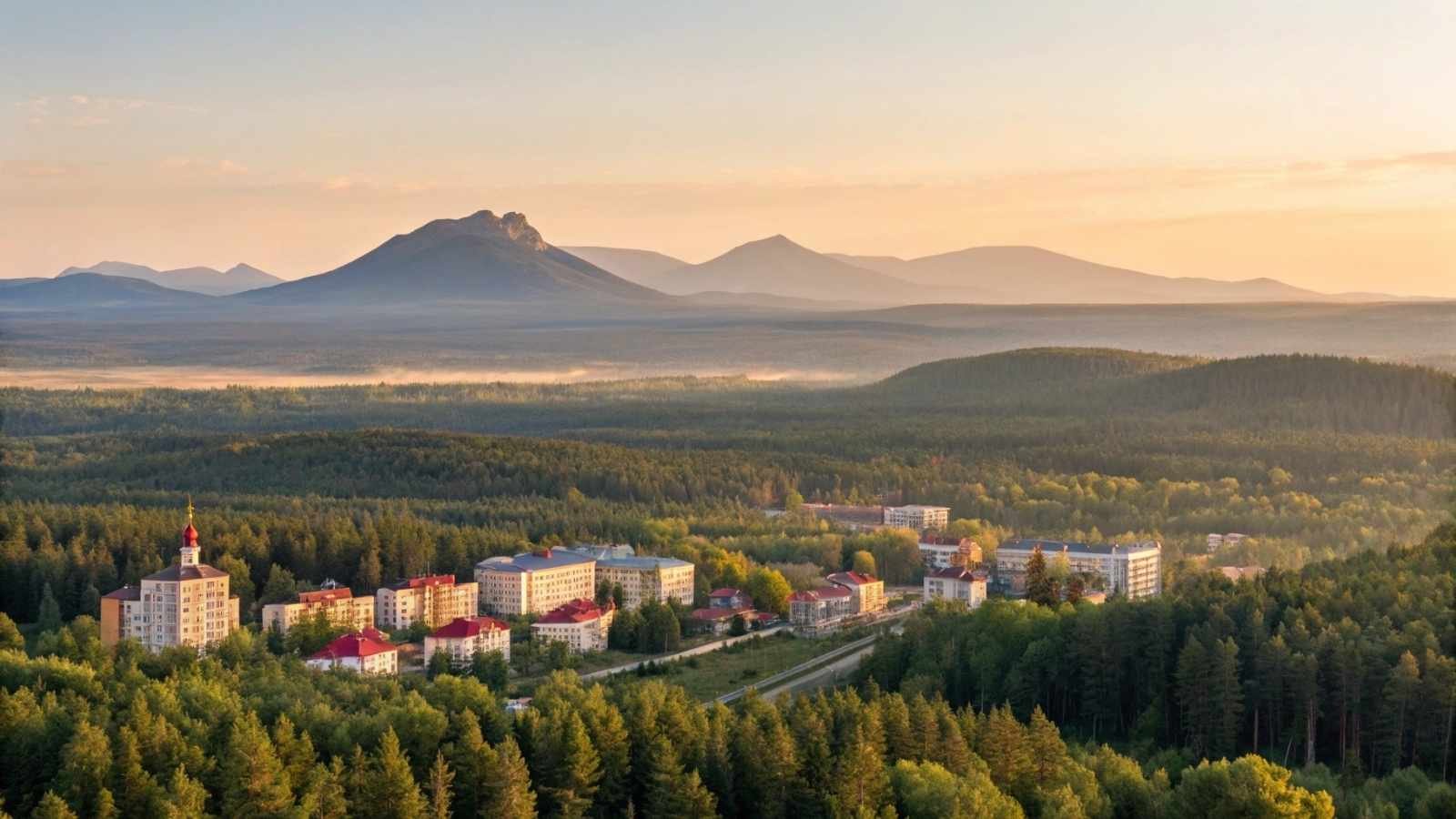
Imagine waking up to the scent of fresh bread wafting through cobblestone streets, the sun kissing your skin as you sip coffee in a bustling plaza. The world feels full of possibility, and your budget stretches further than you ever imagined.
For the dreamers, the wanderers, the adventurers — there’s a growing list of places where $1,000 a month can turn your travel dreams into a reality.
Whether it’s the joy of discovering hidden gems or the thrill of living life on your terms, this guide promises to unlock transformative experiences where every dollar feels like a passport to something extraordinary.
1. Medellín, Colombia

Medellín, once dubbed the “City of Eternal Spring,” is an urban paradise tucked in the valley of the Andes. Surrounded by lush mountains and wrapped in the warmth of perfect year-round weather, it offers a striking contrast to its turbulent past. The vibrant energy of this city pulses through its bustling markets, creative neighborhoods like El Poblado, and the inviting smiles of the locals. Walking through Medellín feels like walking through a kaleidoscope of colors — the graffiti-laden walls of Comuna 13, the lively atmosphere of the Plaza Botero, and the serene beauty of the surrounding hills create an unforgettable experience.
One of the most memorable moments I had was riding the Metrocable to the top of the mountain for a panoramic view of the city. The crisp air and stunning vistas were the perfect reminder of Medellín’s transformation from a once-infamous city to a thriving, progressive metropolis. The contrast between modern infrastructure and old-world charm is fascinating. You’ll quickly feel at home in this welcoming and innovative city, which boasts a surprisingly low cost of living for such a vibrant urban area.
Key Practical Information:
- Peak/Off-peak Seasons: Medellín enjoys mild temperatures year-round, with the rainy season from April to November and the dry season from December to March. The dry season is perfect for outdoor activities and festivals.
- Getting There & Exploring: Fly into José María Córdova International Airport and take a 45-minute taxi ride to the city center. Once there, use the efficient metro system, buses, and the famous Metrocable to explore the hills and cityscape.
- Ideal Duration: 7–10 days is ideal to soak in the culture, explore museums, and discover the surrounding nature.
- Must-try Local Experiences: Don’t miss out on arepas, bandeja paisa, and the vibrant nightlife in El Poblado. A visit to Plaza Botero is essential, where you’ll find sculptures by the famous Colombian artist Fernando Botero.
- Budget Considerations: You can comfortably live on $1,000 per month, even in the more touristy areas like El Poblado. Rent is cheap, and eating out is affordable, but keep in mind occasional touristy expenses when visiting major attractions.
- Cultural Etiquette Tips: Colombians are warm and hospitable; greet with a handshake or cheek kiss. Spanish is the official language, but you’ll find many locals who speak English in tourist areas.
- Photography Opportunities: The Metrocable ride offers breathtaking aerial views of the city. Comuna 13’s vibrant street art and the Plaza Botero sculptures make for fantastic, culturally rich photos.
2. Chiang Mai, Thailand
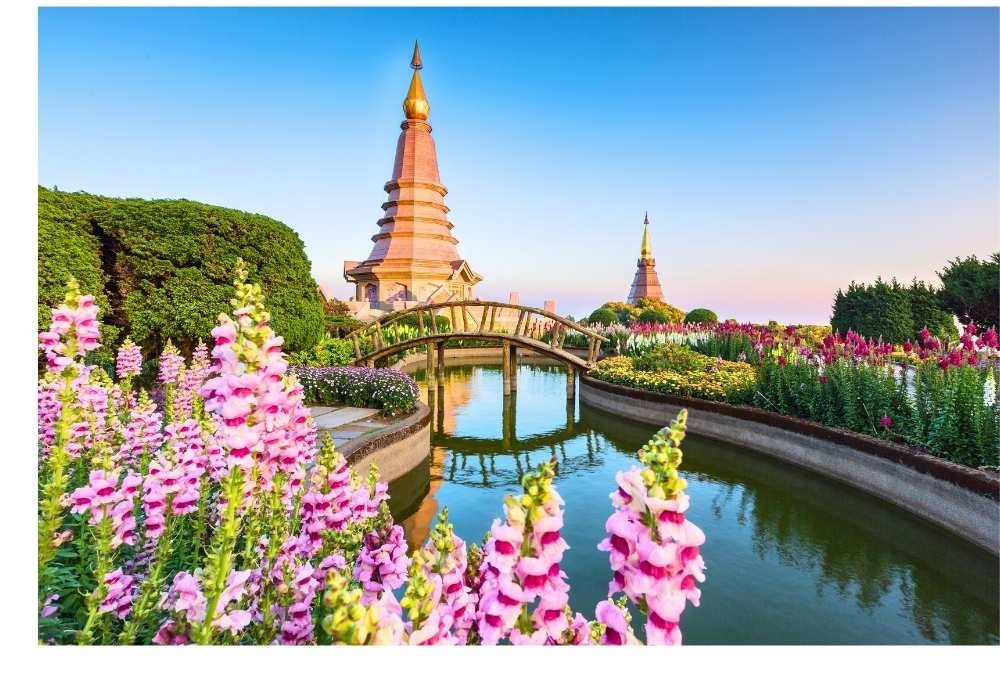
Chiang Mai is a dreamy destination for anyone seeking the perfect balance between traditional Thai culture and modern conveniences. Nestled in the mountains of northern Thailand, it exudes serenity with its golden temples, serene riverbanks, and bustling night bazaars. The Old City, surrounded by ancient walls and moats, offers a window into Thailand’s rich history. The charm of Chiang Mai lies in its relaxed pace of life, where monks walk the streets in their orange robes, and markets hum with the sounds of local vendors selling everything from handcrafted trinkets to fragrant Thai spices.
What struck me most about Chiang Mai was its ability to blend the ancient with the contemporary. I spent an afternoon wandering the quiet grounds of the Wat Phra That Doi Suthep, high above the city, where the panoramic view of Chiang Mai beneath the misty mountains was simply breathtaking. But just as quickly, I was back in the heart of the city, sampling pad thai at a street vendor and chatting with other travelers about their favorite spots. Chiang Mai offers an unforgettable cultural immersion, paired with the ease of living on a budget.
Key Practical Information:
- Peak/Off-peak Seasons: November to February is the peak season, offering cooler, comfortable temperatures, ideal for outdoor exploration. The rainy season (May to October) can limit outdoor activities, but it’s also the best time for lush landscapes.
- Getting There & Exploring: Fly directly into Chiang Mai International Airport. Once there, rent a scooter or bike to navigate the city’s charming streets or explore its surrounding nature.
- Ideal Duration: A week is perfect for first-time visitors, but longer stays allow you to fully immerse in the laid-back lifestyle and surrounding adventures.
- Must-try Local Experiences: Don’t miss the Sunday Walking Street Market for artisan goods and street food. Try the Khao Soi, a local noodle dish, and visit Wat Chedi Luang for its historical significance.
- Budget Considerations: You can live comfortably for under $1,000 per month. Rent for a modest apartment or guesthouse can be as low as $200–$300 per month, and eating out is extremely affordable.
- Cultural Etiquette Tips: Always show respect for Buddha images and monks. It’s customary to remove your shoes before entering temples and homes. When greeting, a traditional wai (palms pressed together) is a polite gesture.
- Photography Opportunities: Capture the beauty of Wat Phra That Doi Suthep’s golden temple atop the mountains, or the Sunday Walking Street Market, filled with colorful street food and crafts.
3. Granada, Nicaragua
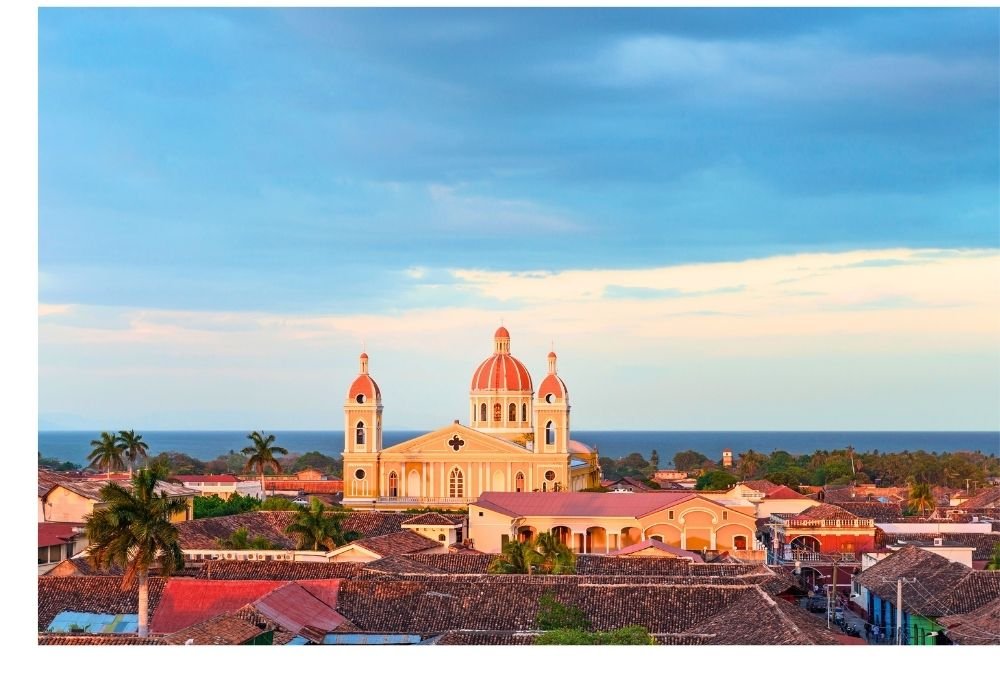
Nestled on the edge of Lake Cocibolca, Granada is Nicaragua’s colonial jewel. With cobblestone streets, pastel-colored buildings, and the imposing Mombacho Volcano in the background, Granada exudes old-world charm. The Central Park is always buzzing with life, and the Cathedral of Granada, with its striking yellow facade, stands proudly in the town’s heart. Walking through this historic town feels like stepping back in time, with horse-drawn carriages clopping by, local cafes offering freshly brewed coffee, and lush parks dotted throughout the town.
A memorable experience for me was taking a boat ride to the Islets of Granada — tiny islands formed by volcanic eruptions, some of which are inhabited by friendly locals. You’ll pass by colorful wooden homes perched on small islands, and the peacefulness of the lake at sunrise was pure magic. Granada is a perfect blend of historical beauty and natural wonder, where you can feel the pulse of Nicaraguan life.
Key Practical Information:
- Peak/Off-peak Seasons: December to April is the best time to visit, as it falls within the dry season with pleasant weather. From May to October, expect tropical rains that might limit outdoor activities.
- Getting There & Exploring: Granada is about a 40-minute drive from Managua International Airport. Once there, walking or cycling is the best way to explore the town’s quaint streets.
- Ideal Duration: A 4–7 day visit is ideal for soaking in the town’s culture, exploring the nearby volcanoes, and relaxing by the lake.
- Must-try Local Experiences: Visit the Islets of Granada for a boat tour, explore Masaya Volcano National Park, and sample nacatamales at a local restaurant.
- Budget Considerations: Granada is incredibly affordable. For $1,000 a month, you can rent a decent apartment and enjoy hearty local meals every day.
- Cultural Etiquette Tips: Nicaraguans are warm and welcoming. Always greet with a friendly buenos días. Keep in mind that it’s polite to remove your hat when entering religious buildings.
- Photography Opportunities: The Cathedral of Granada, Islets of Granada, and vibrant Central Park are perfect spots for capturing the essence of colonial Nicaragua.
4. Canggu, Bali, Indonesia
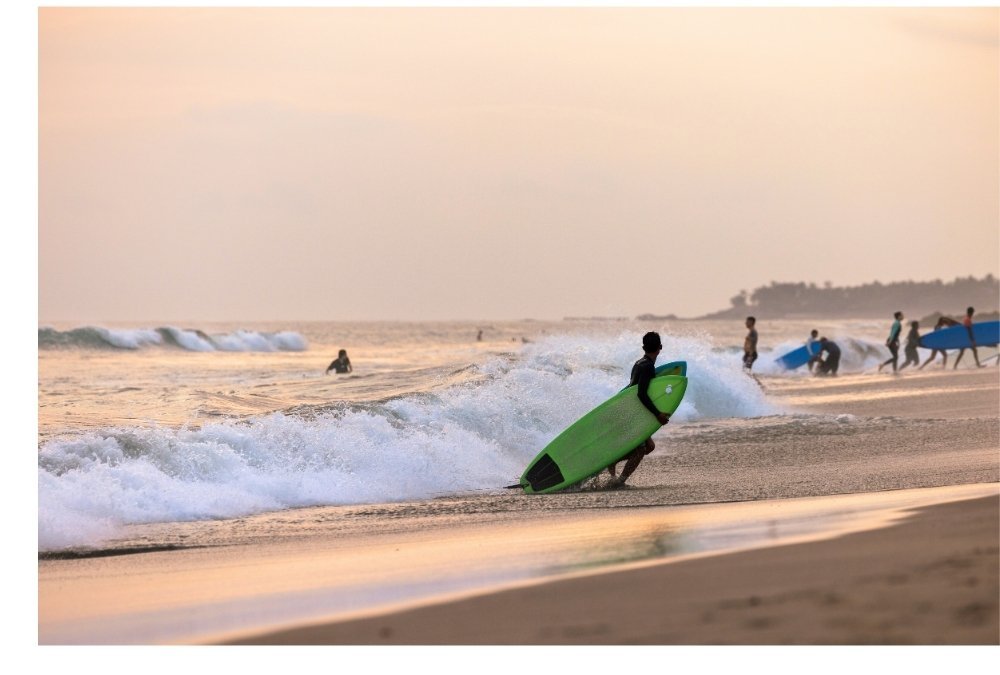
Canggu is the ultimate blend of laid-back beach vibes and modern living, set against the backdrop of Bali’s stunning coastline. This surf town has become a hot spot for expats, digital nomads, and those simply seeking a slower pace of life. The trendy cafes, yoga studios, and vibrant beach clubs give Canggu its chic, cosmopolitan flair. Yet, the town still holds onto its roots, with local warungs serving up delicious Indonesian fare and temples like Tanah Lot offering glimpses into Bali’s spiritual heart.
I’ll never forget my mornings spent at the beach, sipping kopi bali while watching surfers ride the waves, with the sun slowly rising over the Indian Ocean. There’s an undeniable energy in Canggu, a magnetism that attracts creators and adventurers from all over the world. From the Echo Beach surf scene to the quiet retreats in the rice fields, Canggu offers a perfect balance of fun and relaxation.
Key Practical Information:
- Peak/Off-peak Seasons: The dry season from April to October is ideal, offering sunny days perfect for beach activities. The rainy season from November to March sees lighter crowds but heavy downpours.
- Getting There & Exploring: Fly into Ngurah Rai International Airport in Denpasar, then take a 30-minute taxi ride to Canggu. Rent a scooter to explore the town and surrounding beaches.
- Ideal Duration: Spend 5–7 days in Canggu to enjoy the beaches, cafes, and day trips to Ubud or nearby volcanoes.
- Must-try Local Experiences: Try surfing at Echo Beach, practice yoga at The Practice, and explore Tanah Lot for unforgettable sunset views.
- Budget Considerations: Canggu can be more expensive than other parts of Bali, but with $1,000 per month, you can easily find a small villa and enjoy local food daily.
- Cultural Etiquette Tips: Bali has a deeply spiritual culture. Always dress modestly when visiting temples, and be respectful of local customs.
- Photography Opportunities: Capture the surfers at Echo Beach, the iconic Tanah Lot temple during sunset, or the serene rice fields just outside town.
5. Oaxaca, Mexico
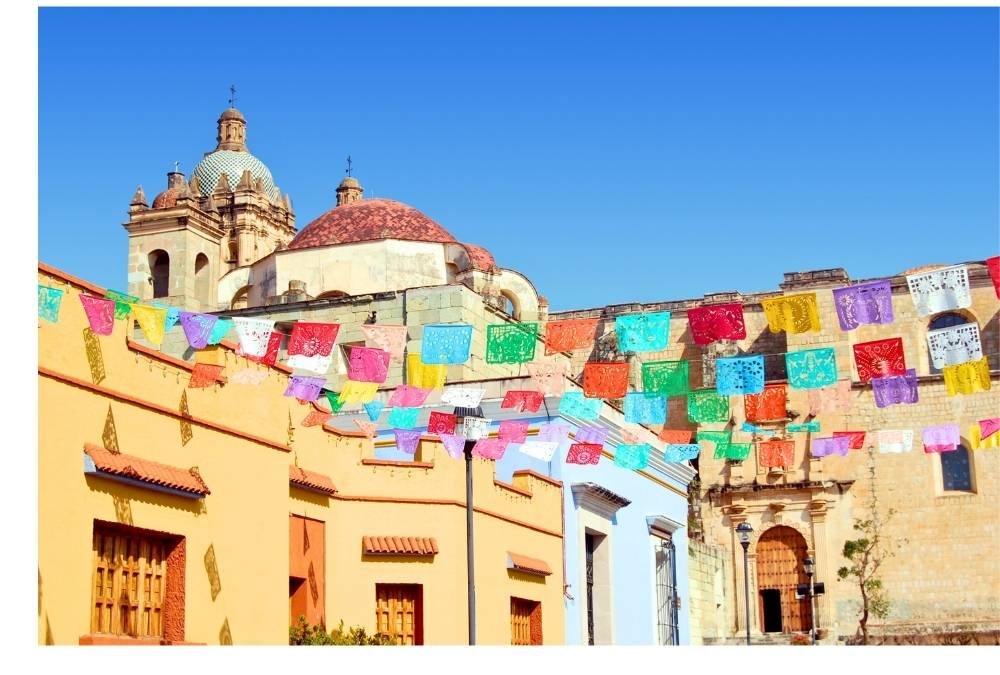
Oaxaca is a cultural gem in southern Mexico, where centuries of history blend with modern creativity. Known for its vibrant festivals, delicious cuisine, and colonial architecture, Oaxaca feels like an artist’s dream come to life. The historic center, a UNESCO World Heritage site, boasts beautifully restored buildings, colorful markets, and street corners alive with music. But what really draws me to Oaxaca is its food — from mole to tlayudas, the flavors are as rich as the town’s cultural heritage.
One of the most unforgettable experiences was wandering through the Santo Domingo Church, a stunning example of baroque architecture. Afterward, I spent hours exploring Mercado 20 de Noviembre, tasting the famous Oaxacan chocolate and the famous mezcal. Oaxaca feels like a place where food, art, and culture exist harmoniously, and living here is a deeply enriching experience.
Key Practical Information:
- Peak/Off-peak Seasons: The best time to visit Oaxaca is during the dry season, from November to April, especially if you want to experience the famous Guelaguetza Festival in July.
- Getting There & Exploring: Fly into Oaxaca International Airport. Once in town, the city is best explored on foot or by bike.
- Ideal Duration: 4–7 days is ideal to visit the main attractions, sample local food, and enjoy nearby excursions.
- Must-try Local Experiences: Explore the Monte Albán ruins, visit Mercado 20 de Noviembre for local delicacies, and try the iconic Oaxacan mole.
- Budget Considerations: Oaxaca is very affordable, with rents and food prices well within budget for $1,000 a month.
- Cultural Etiquette Tips: Oaxaca is known for its indigenous cultures, so always be respectful of local traditions. Greet with a handshake, and remember to ask before taking photos in indigenous areas.
- Photography Opportunities: Capture the striking architecture of Santo Domingo Church, vibrant street life, and the colorful Mercado 20 de Noviembre with its bustling food stalls.
6. Cuenca, Ecuador
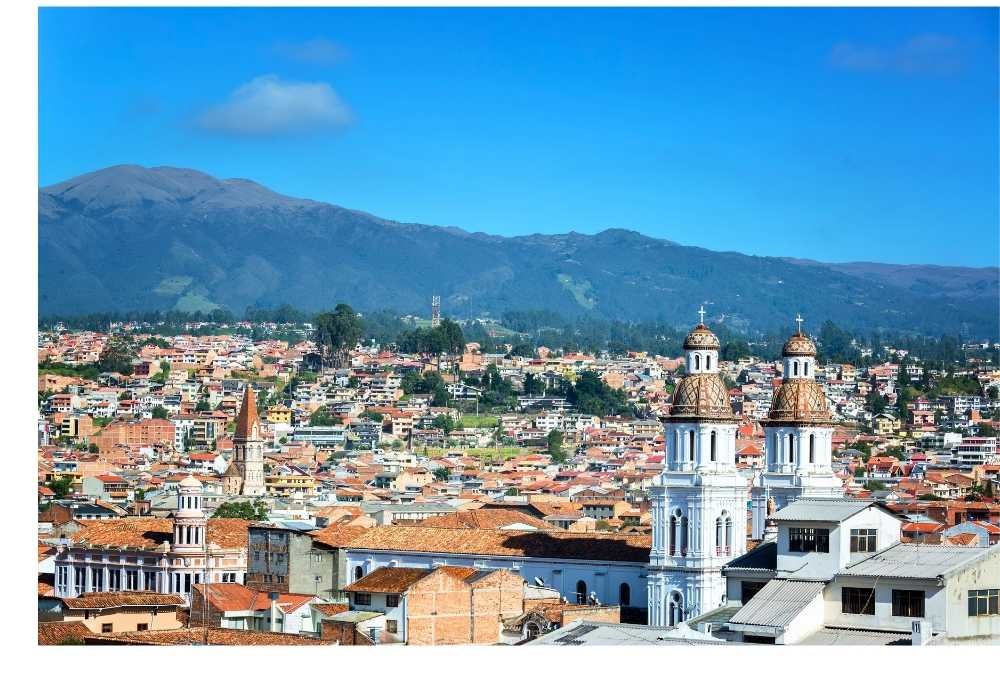
Cuenca offers a rare gem of a place where colonial charm meets the natural beauty of the Andes. Known for its romantic cobblestone streets, historic architecture, and sweeping river views, this charming city is a treasure trove for history buffs and nature lovers alike. A stroll through Parque Calderón, with its colonial-era cathedral at the center, feels like a journey back in time. The Cajas National Park, just outside the city, is a hidden paradise for hikers and nature enthusiasts. You’ll find yourself walking among alpine lakes, moss-covered forests, and peaceful valleys — all less than an hour away from the city.
A standout experience in Cuenca is attending the Año Nuevo (New Year’s Eve) celebrations, where the streets are filled with paper mache figures known as Año Viejo, representing the old year, which are set ablaze in a festival of fire and fireworks. These cultural celebrations, along with the traditional Ecuadorian meals like locro de papas (a hearty potato soup), offer a deeper immersion into Ecuador’s rich cultural fabric.
Key Practical Information:
- When to Visit: Cuenca has pleasant weather year-round, but the dry season (June to September) is particularly popular for exploring the city and surrounding nature, while the rainy season (October to May) offers lush greenery but comes with occasional downpours.
- Reaching Cuenca: The Mariscal Lamar Airport is the nearest, with connections to major Ecuadorian cities like Quito and Guayaquil. Once in Cuenca, public transport and walking are your best ways to explore the charming streets.
- Best Time to Stay: Two weeks is ideal for discovering both the town and its natural surroundings. Spend time in the city’s historic center, but be sure to take day trips to explore the Andes.
- Local Experience: Visit El Mercado 10 de Agosto for fresh produce and handmade crafts, or experience La Feria Libre to see the local community at work. Don’t miss the Pumapungo Archaeological Park for a deep dive into the region’s ancient past.
- Budget Considerations: Cuenca is an affordable place to live. You can rent an apartment in the city for as low as $300/month, and a simple meal costs under $3.
- Cultural Etiquette Tips: Ecuadorians are warm and enjoy conversation. It’s common to greet with a handshake or a kiss on the cheek for friends. When visiting markets or local shops, haggling is acceptable but do so respectfully.
- Photography: Capture the Cajas National Park’s stunning landscapes, the colonial architecture of Parque Calderón, or the colorful local markets filled with fresh produce and handicrafts.
7. Da Nang, Vietnam
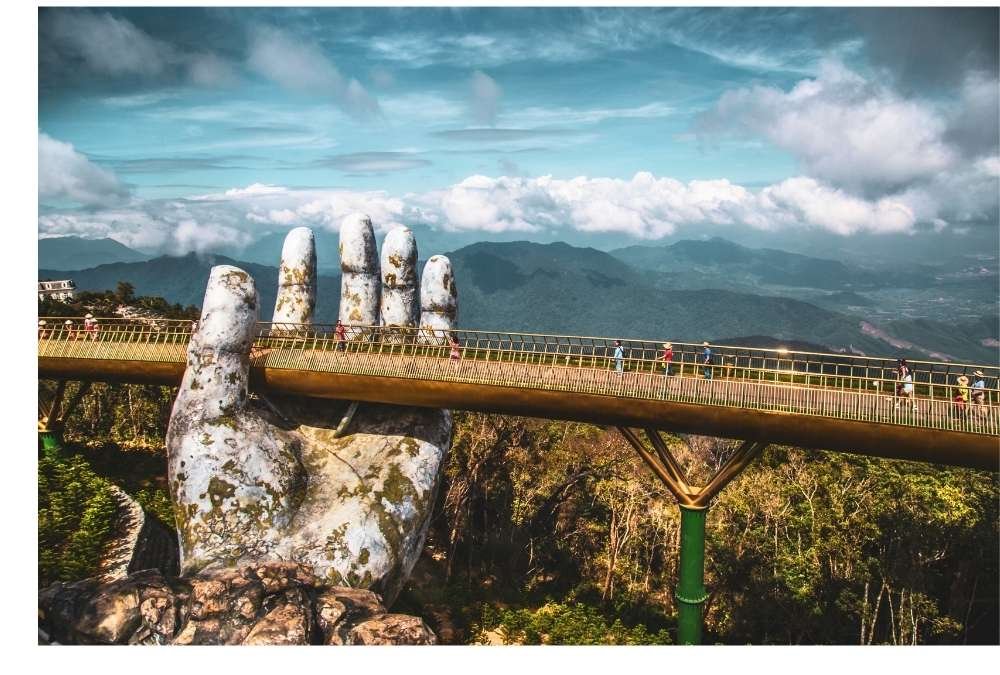
Da Nang sits at the crossroads of Vietnam’s north and south, offering an unexpected mix of modernity and traditional charm. Most people know it for its proximity to Hoi An and Hue, but Da Nang itself is a rising star. The city offers beautiful beaches like My Khe that rival any tropical paradise, with soft sand and clear waters, perfect for those who want to blend city living with nature. In the heart of the city, the Golden Bridge in the Ba Na Hills offers one of the most awe-inspiring views — the massive hands supporting the bridge make for a truly unique sight.
One of the best aspects of Da Nang is the coffee culture. You won’t find coffee like this anywhere else. Vietnam’s egg coffee or cà phê sữa đá (iced coffee with sweetened condensed milk) offers an entirely new level of caffeine indulgence. Da Nang’s laid-back vibe, juxtaposed with the vibrant Han River Bridge at night, creates an ambiance that’s simultaneously peaceful and energizing.
Key Practical Information:
- Peak/Off-peak Seasons: The dry season (February to August) is ideal, with sunny weather perfect for beach days and sightseeing. The rainy season (September to January) can be wet, but this is when the area is least crowded.
- Reaching Da Nang: Da Nang International Airport is well-connected to major cities within Vietnam and neighboring countries. Getting around the city is easy with taxis or rented motorbikes — perfect for exploring the stunning beaches and bustling streets.
- Length of Stay: A stay of 5–7 days is enough to experience Da Nang’s unique mix of relaxation and adventure. Spend your days visiting nearby cultural sites and your evenings enjoying the city’s vibrant nightlife.
- Local Experience: Make sure to visit Marble Mountains for a mix of natural beauty and Buddhist temples. Head to Son Tra Peninsula for secluded beaches and wildlife viewing.
- Budget Considerations: Da Nang is affordable, with meals starting at just $1–$2 and rental properties available for as low as $300/month.
- Cultural Etiquette Tips: Vietnamese people are known for their warmth and hospitality. When visiting temples or interacting with locals, remember to dress modestly and remove your shoes when entering sacred places.
- Photography: The Golden Bridge at sunrise, the white sands of My Khe Beach, and the vibrant streets at night are perfect captures of Da Nang’s diverse charm.
8. Tbilisi, Georgia
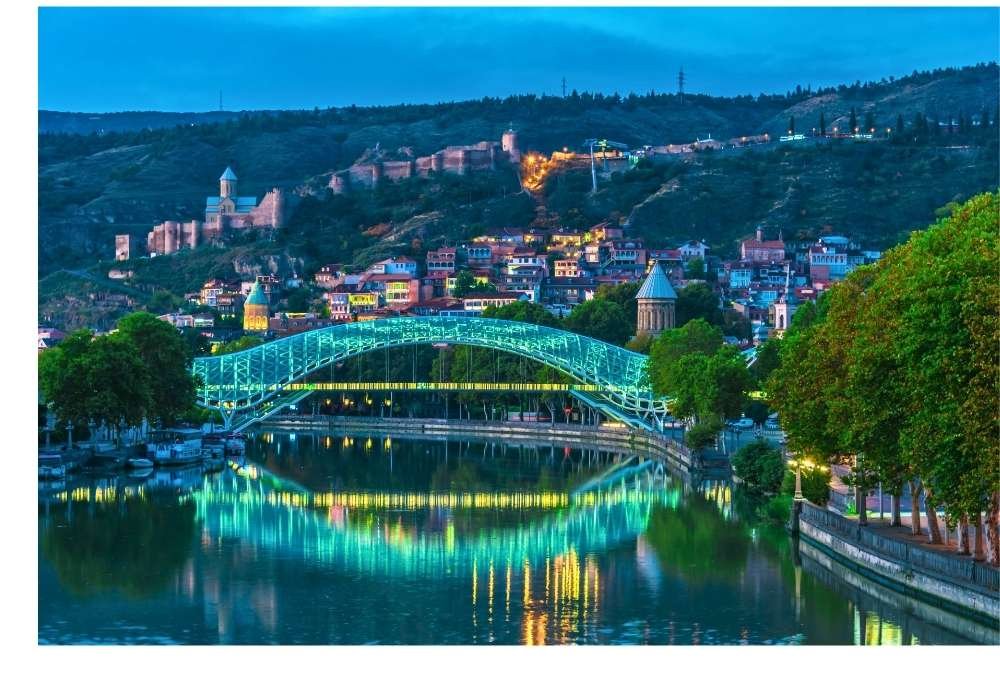
Tbilisi, the capital of Georgia, is a hidden gem that often flies under the radar for international travelers. A city steeped in history and culture, Tbilisi invites you to lose yourself in its maze of narrow, winding streets lined with colorful houses, grandiose churches, and centuries-old architecture. What makes Tbilisi so special is the contrast: From the ancient Narikala Fortress perched on a hilltop to the sleek modernist architecture in the Rike Park area, Tbilisi embraces its contradictions in a way that feels effortlessly cool.
Tbilisi’s cuisine is another of its delights. The local dish, khachapuri (cheese-filled bread), is comfort food at its finest, while khinkali (dumplings) provide a savory bite that’s hard to beat. Enjoying these dishes while sipping a glass of wine (Georgia is considered the birthplace of wine) makes for an unforgettable experience. As night falls, the vibrant bar scene comes to life, offering everything from cozy wine bars to more eclectic spots in the heart of the city.
Key Practical Information:
- Peak/Off-peak Seasons: Spring and autumn (April–June, September–November) are the best times to visit, offering mild weather ideal for exploring the city and the surrounding wine regions.
- Reaching Tbilisi: Tbilisi International Airport serves as the main gateway, and taxis or local minibuses are perfect for navigating the city.
- Duration of Visit: A long weekend (4–5 days) is ideal to enjoy the city’s historic charm and the nearby wine country.
- Must-try Experiences: Explore the ancient Sulfur Baths, take a walk along the Tbilisi funicular for panoramic views, and visit the Chronicle of Georgia for a glimpse into Georgia’s rich history.
- Budget Considerations: Tbilisi is very affordable, with the average cost of living well below $1,000/month, especially for food and transportation.
- Cultural Etiquette Tips: Georgians are known for their hospitality. Expect to be invited to share a meal or a drink. When visiting homes, always bring a small gift as a sign of respect.
- Photography: The skyline at sunset, the ancient churches, and the colorful houses of Abanotubani make for stunning photo opportunities.
9. Playa del Carmen, Mexico
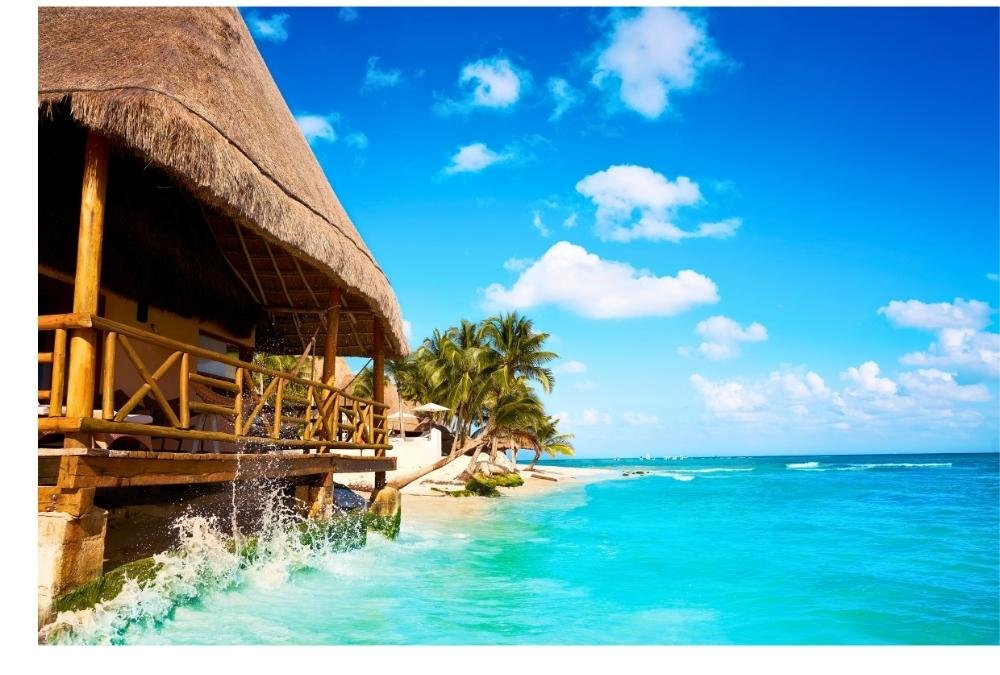
Playa del Carmen, located on the Riviera Maya, is the ultimate blend of relaxation and adventure, where the stunning coastline meets a lively urban vibe. While many tourists flock to nearby Cancún, Playa del Carmen offers a quieter, more local experience. The pedestrian-only Quinta Avenida is the heart of the town, lined with cafes, shops, and restaurants offering both traditional Mexican dishes and international cuisine. But it’s the beachfront that steals the show — the turquoise waters and white sand of Playa Mamitas invite you to unwind and soak up the sun.
What sets Playa apart from the typical tourist hotspots is the expat community that calls it home. It’s not uncommon to see digital nomads working in cafes, retirees living the beach life, and adventurous souls exploring the cenotes or nearby ruins. Playa del Carmen balances both its local roots and international influence, making it a unique place to live and visit.
Key Practical Information:
- Peak/Off-peak Seasons: The dry season (December to April) is the peak time for beach-goers, while the rainy season (May to October) is quieter but can still offer sunny days in between showers.
- Getting There & Exploring: Playa del Carmen is easily accessible via a 45-minute drive from Cancún International Airport. The town itself is small enough to explore on foot, but taxis or rental bikes are common for trips outside the town.
- Ideal Duration: 5–7 days will allow you to explore both the town and nearby attractions such as the Tulum Ruins or the Cenotes.
- Must-try Experiences: Dive into the Mesoamerican Reef for incredible snorkeling, explore the Chichen Itza ruins, and spend an afternoon lounging on Playa Mamitas.
- Budget Considerations: Playa del Carmen can be more expensive than inland Mexico, but $1,000/month will get you a modest apartment and plenty of room for enjoying the vibrant food scene.
- Cultural Etiquette Tips: Mexicans are warm and friendly. In Playa, you’ll often find people greeting you with a “buenos días.” Try to speak a little Spanish, as it will go a long way in making connections.
- Photography: The colorful streets of Quinta Avenida, the crystal-clear waters of Playa Mamitas, and the ancient ruins of Tulum are perfect backdrops for stunning photos.
10. Vilcabamba, Ecuador
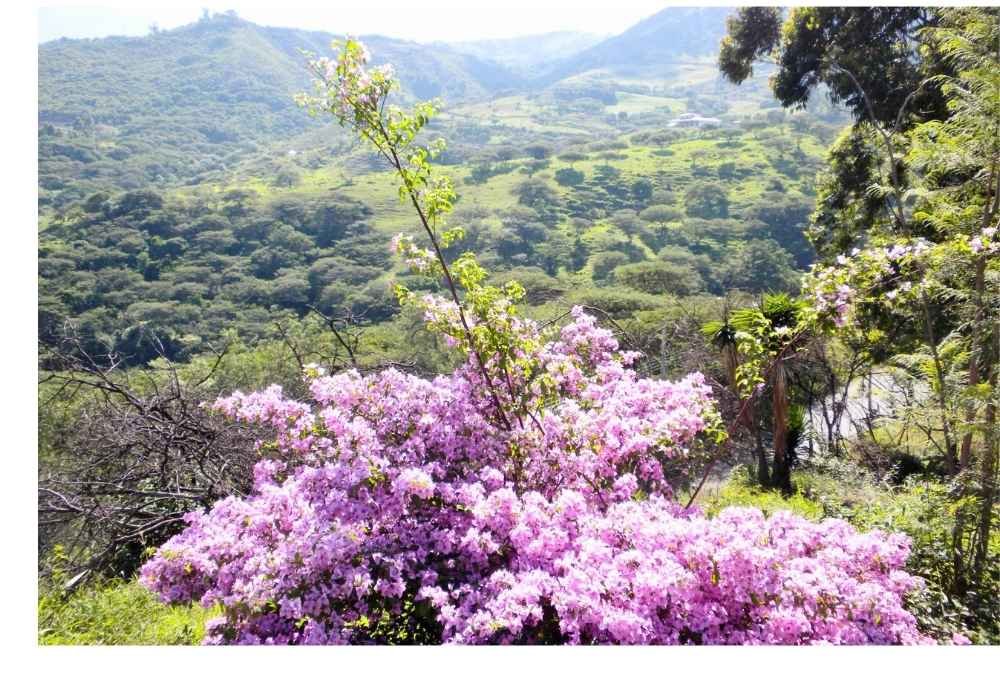
Vilcabamba, a small town nestled in Ecuador’s southern Andes, is an unassuming haven for those looking for peace, nature, and rejuvenation. It’s known as the “Valley of Longevity” due to the exceptional lifespan of its residents, and this serene, low-stress lifestyle is contagious. The town sits at the foot of verdant mountains, with lush forests surrounding it and countless hiking trails that take you deep into nature. This is the place where time moves slower, and your biggest decision of the day is whether to hike to the waterfall or explore the nearby mountain paths.
Unlike the more urban towns, Vilcabamba offers a slower pace and a true sense of community. The local markets are a mixture of fresh organic produce, handmade goods, and Ecuadorian treats. What stands out about Vilcabamba is its emphasis on wellness — from yoga retreats to natural healing, many visitors come here to revitalize both body and mind. Staying in a peaceful, budget-friendly cabin or eco-lodge offers an immersive way to experience the tranquil charm of the region.
Key Practical Information:
- Peak/Off-peak Seasons: The dry season (May to September) is ideal for hiking and exploring. The rainy season (October to April) offers lush landscapes but heavier rainfall.
- Reaching Vilcabamba: Take a 1.5-hour bus ride from Loja (the nearest city) to Vilcabamba. Taxis or private transport from Loja are easy and affordable.
- Duration of Stay: A week is ideal to fully embrace the slow-paced lifestyle of Vilcabamba, although many choose to stay longer for a complete detox or wellness retreat.
- Local Experience: Hike to Yamburara for stunning views, visit the Shamans Market, and enjoy a day at the Vilcabamba River.
- Budget Considerations: Living in Vilcabamba is incredibly affordable, with rent as low as $200/month, and fresh food from local markets available at very low prices.
- Cultural Etiquette Tips: The town has a relaxed, peaceful atmosphere. Respect for nature and local customs is important. Always greet locals with a friendly “buenos días.”
- Photography: Capture the rugged beauty of the Andes, the quiet village streets, and the vibrant market where you’ll find an abundance of fresh fruits and local crafts.
11. Phnom Penh, Cambodia

Phnom Penh is often overshadowed by its more famous Southeast Asian counterparts like Bangkok and Ho Chi Minh City, but this dynamic capital has its own rhythm — one that pulses with a blend of history, culture, and resilience. Beyond the majestic Royal Palace and the haunting Killing Fields, Phnom Penh holds a treasure trove of hidden gems. Take a walk through the backstreets to discover the art deco architecture, overlooked by most tourists, or pop into one of the many local markets, where a medley of vibrant textiles, exotic fruits, and handmade goods await.
One of Phnom Penh’s best-kept secrets is the Cambodian Art Centre. A contemporary space tucked away behind the bustling streets, it showcases the work of emerging Cambodian artists. It’s a great escape from the usual tourist spots, offering a fresh take on the country’s evolving culture. As you sip on a local fresh sugarcane juice, you’ll see Phnom Penh from a local’s eyes — complex, full of contrasts, and brimming with possibility.
Key Practical Information:
- Peak/Off-peak Seasons: The dry season (November to February) offers cooler temperatures and the best sightseeing weather. The rainy season (May to October) can get intense, but this is also when the city’s lush greenery is at its best.
- Getting There & Exploring: Fly into Phnom Penh International Airport, then grab a tuk-tuk or bike to explore the city. For a deeper dive into local life, rent a motorbike for easy access to hidden corners of the city.
- Ideal Duration: 5–7 days will allow you to see the major sights and soak in Phnom Penh’s unique vibe, with time for deeper exploration of local culture.
- Local Insight: Head to Sisowath Quay during sunset for a peaceful walk along the Mekong River, or stop by Wat Phnom, a serene hilltop temple that offers stunning city views.
- Budget Considerations: With $1,000/month, you can comfortably rent an apartment and enjoy the local food scene, which is both affordable and incredibly delicious.
- Cultural Etiquette Tips: Cambodians are incredibly welcoming, but it’s important to show respect, especially at religious sites. Always remove your shoes and avoid pointing your feet at people or religious objects.
- Photography: Capture the bustling streets around Russian Market, the tranquil beauty of Wat Phnom, or the quiet corners of the Cambodian Art Centre.
12. Lake Atitlán, Guatemala
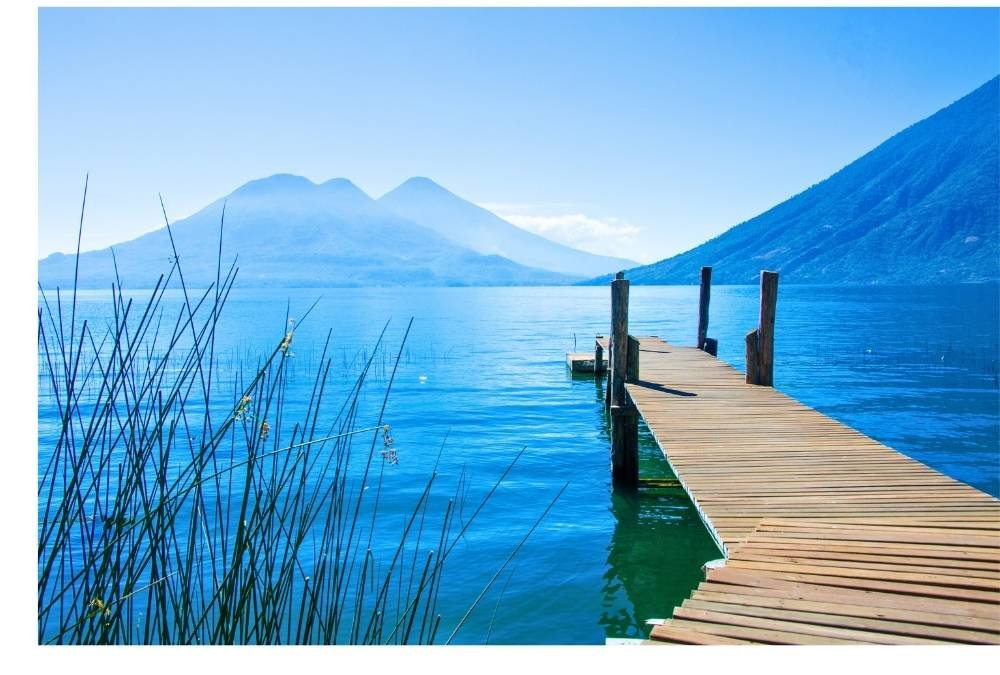
Nestled in a deep volcanic crater, Lake Atitlán is a sight to behold. Its pristine waters shimmer in shades of blue, reflecting the towering volcanoes that surround it. But beyond the breathtaking scenery lies a deep cultural tapestry woven by the indigenous communities living around the lake. The Mayan villages that dot the shoreline — like San Juan La Laguna and Santiago Atitlán — are steeped in traditions that have remained largely untouched by time. As you explore the villages, you’ll see vibrant textiles, hear traditional Mayan dialects, and experience a way of life that connects deeply with the land and its natural rhythms.
What sets Lake Atitlán apart from other natural wonders is its accessibility to those seeking both adventure and tranquility. Whether you’re kayaking across the lake, hiking up Indian Nose for a sunrise view, or simply soaking in the quiet beauty of the landscape from a hammock, the lake’s magic invites you to pause, breathe, and rediscover your sense of wonder.
Key Practical Information:
- Peak/Off-peak Seasons: December to April is the dry season, perfect for outdoor adventures and boat tours. The rainy season (May to October) brings lush greenery but higher humidity and occasional afternoon showers.
- Getting There & Exploring: Take a shuttle or public bus from Antigua to Panajachel, the main town on the lake. From there, take a boat to explore the lakeside villages — each with its unique charm.
- Ideal Duration: Spend 4–6 days here, with plenty of time for hiking, village exploration, and relaxation by the water.
- Local Insight: The Sunset Café in San Pedro La Laguna offers the best lakefront views for a laid-back evening drink. Don’t miss a visit to Chichicastenango Market, one of Central America’s most famous markets.
- Budget Considerations: Lake Atitlán is surprisingly affordable, with low-cost accommodations and meals. You can easily live on $1,000/month, even while enjoying boat rides and excursions.
- Cultural Etiquette Tips: When visiting the Mayan villages, be respectful of local customs and traditions. It’s a good idea to ask before taking photos of people, especially in more remote areas.
- Photography: The sunrises over Lake Atitlán are simply magical, and the colorful markets in San Juan La Laguna and Santiago Atitlán provide fantastic photo opportunities.
13. Lviv, Ukraine

Lviv, often called Ukraine’s cultural capital, is a city that thrives on its deep-rooted history and the arts. The cobbled streets are lined with historic buildings, grand coffee houses, and vibrant squares, creating a European feel that’s often compared to Prague or Vienna but with its own distinct flair. The Lviv Theatre of Opera and Ballet hosts world-class performances, while local cafes such as Café 1 serve up a cup of coffee that rivals any in Europe. For lovers of culture and art, Lviv is a goldmine — you’ll find impressive galleries, street art, and festivals taking place year-round.
What makes Lviv truly remarkable is its ability to embrace both tradition and modernity. From the Lviv History Museum to the thriving underground bar scene, the city effortlessly melds centuries-old history with a vibrant, youthful energy. A visit to Lviv feels like stepping into a living canvas of Ukrainian culture — constantly evolving, yet deeply connected to its roots.
Key Practical Information:
- Peak/Off-peak Seasons: The summer months (May to September) are warm and bustling with festivals, while winter offers a magical experience, with Christmas markets lighting up the city. The shoulder seasons (April and October) are quieter, with pleasant weather.
- Getting There & Exploring: Fly into Lviv Danylo Halytskyi International Airport, then explore the city on foot. Lviv’s compact size makes it perfect for walking tours.
- Ideal Duration: 4–5 days will allow you to take in the city’s major sites, cafes, and markets at a leisurely pace.
- Local Insight: Don’t miss a drink at Kryjivka, an underground bar built into the city’s history. Try a bowl of borscht and a plate of pierogi to experience the heart of Ukrainian cuisine.
- Budget Considerations: Lviv is affordable, with meals costing as little as $3 and a comfortable apartment available for under $300/month.
- Cultural Etiquette Tips: Ukrainians are warm and proud of their heritage. It’s polite to greet with a handshake, and when visiting churches, dress modestly.
- Photography: Lviv’s Rynok Square, the Opera House, and the colorful Prison on Lontskogo make for captivating photo spots that capture the city’s cultural richness.
14. Merida, Mexico
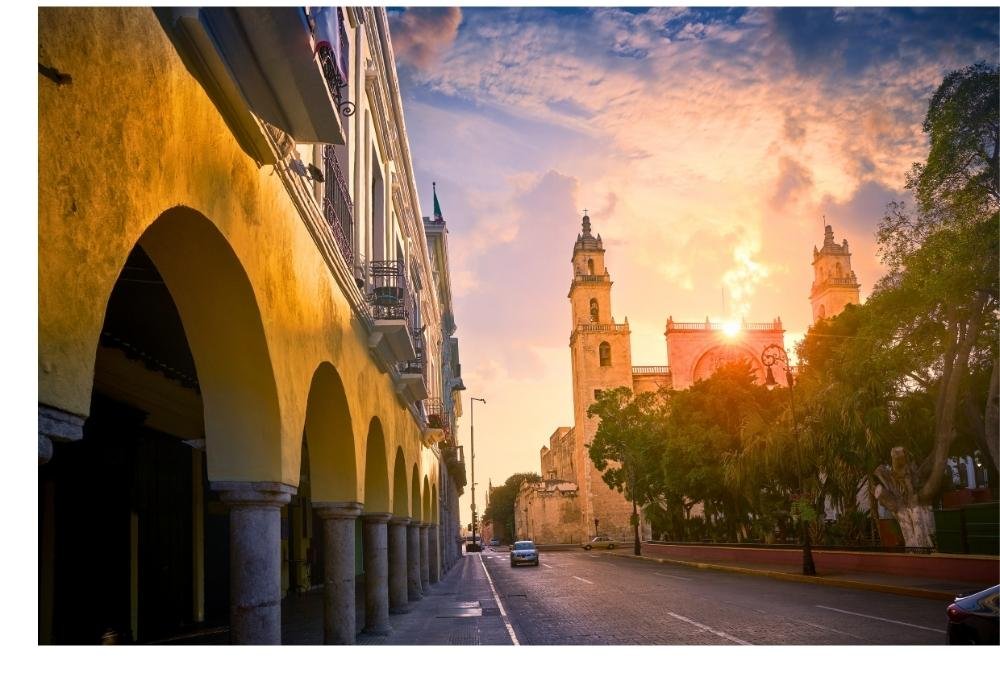
Merida, the capital of the Yucatán Peninsula, is a gateway to Mexico’s colonial past and Mayan heritage. The City of the Mayab, as it’s often called, is a fusion of history, art, and culture. The Plaza Principal is alive with people, music, and vibrant festivals, while Paseo de Montejo is lined with grand colonial mansions that tell the story of the city’s wealth during the 19th century. Merida also boasts Mayan ruins nearby, such as Uxmal, making it the perfect base for cultural exploration.
What makes Merida stand out is its warmth, not just in the temperature but in the people. The Yucatecan hospitality is legendary, and the city’s relaxed pace is a perfect antidote to the hustle of Mexico’s more tourist-heavy destinations. After exploring the historic center, head to a local cenote for a refreshing swim in crystal-clear waters, or visit one of the art galleries showcasing contemporary local art.
Key Practical Information:
- Peak/Off-peak Seasons: The dry season (November to April) offers the best weather for outdoor exploration, while the rainy season (May to October) is quieter and perfect for enjoying Merida’s cooler evenings.
- Getting There & Exploring: Fly into Manuel Crescencio Rejón International Airport and use public transport or rent a bike to explore the city’s historic streets.
- Ideal Duration: Spend 5–6 days in Merida, allowing time to visit local markets, explore Mayan ruins, and relax in the town’s laid-back cafes.
- Local Insight: Visit the Santa Lucia Park for an evening concert, or stop by La Mejorada to see the San Antonio de Padua Church.
- Budget Considerations: With $1,000/month, you’ll find affordable rent and inexpensive meals. The cost of living is very low, and enjoying Merida’s rich cultural offerings won’t break the bank.
- Cultural Etiquette Tips: Yucatecos are known for their friendliness. Greet with a warm “buenos días” and be respectful when visiting religious sites.
- Photography: The Plaza Principal, Paseo de Montejo, and Mayan ruins in the nearby countryside provide countless opportunities for beautiful, cultural photos.
15. Penang, Malaysia

Penang is often referred to as the food capital of Malaysia, and it’s not hard to see why. The island offers a dazzling array of flavors, from char kway teow to laksa, served in open-air hawker stalls and high-end restaurants alike. However, Penang’s charm doesn’t stop at its food. The UNESCO-listed George Town is a vibrant melting pot of cultures, where Chinese, Indian, Malay, and European influences intertwine seamlessly. Walking through the streets feels like entering an open-air museum of street art, colorful heritage buildings, and hidden cafes.
Beyond the culinary and cultural experience, Penang offers a fascinating glimpse into Malaysia’s colonial past, seen through its architecture and museums. But what truly makes Penang unique is its ability to balance the old with the new — from the historic Khoo Kongsi clan house to the modern, trendy Gurney Drive.
Key Practical Information:
- Peak/Off-peak Seasons: The best time to visit Penang is during the dry season (November to January), with pleasant weather perfect for beach trips and sightseeing. The rainy season (May to October) is less crowded but wetter.
- Getting There & Exploring: Penang International Airport connects well to major cities in Asia. Rent a bicycle or take a trishaw to explore the historic streets of George Town.
- Ideal Duration: Spend 4–6 days to experience both the island’s food culture and its historical sites, with time for beach relaxation.
- Local Insight: Don’t miss the Penang Hill Railway for breathtaking views or the Penang Peranakan Mansion for an immersive cultural experience.
- Budget Considerations: Penang is very affordable. $1,000/month will comfortably cover accommodation, meals, and sightseeing.
- Cultural Etiquette Tips: Malaysians are known for their politeness. When visiting temples or mosques, dress modestly and remove your shoes.
- Photography: The colorful street art in George Town, the bustling Chulia Street, and the serene Penang Hill offer ample photography opportunities.


